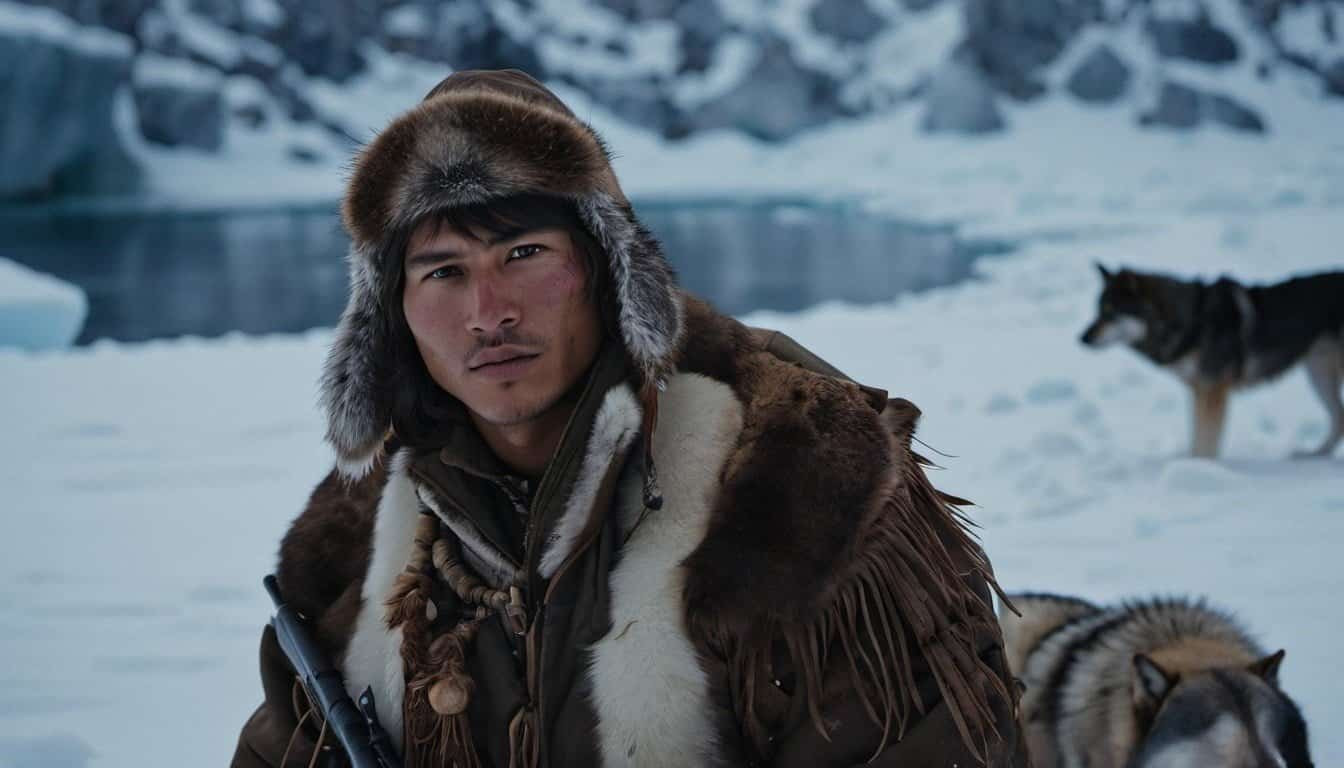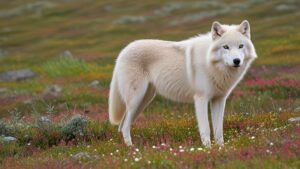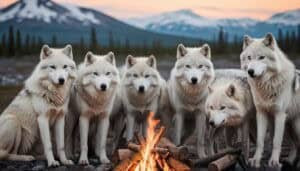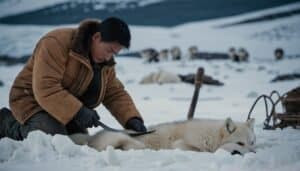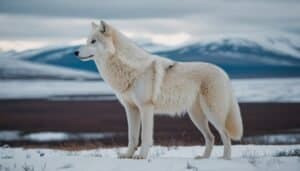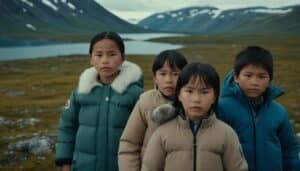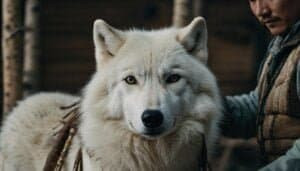Introduction
Arctic wolf hunting is a traditional practice deeply rooted in the culture and survival strategies of indigenous Arctic communities
This article delves into the tools and techniques used in traditional Arctic wolf hunting, the strategies and adaptations necessary for successful hunts, and the cultural and ethical aspects surrounding this practice
Understanding these elements offers insight into the intricate relationship between Arctic wolves and the people who have hunted them for generations
Traditional Arctic Wolf Hunting Tools and Techniques
The traditional tools and techniques used in Arctic wolf hunting are a testament to the ingenuity and resourcefulness of indigenous Arctic communities. These methods have been passed down through generations, ensuring the survival of both the hunters and their culture
Tools Used in Traditional Arctic Wolf Hunting
Indigenous hunters traditionally used a variety of tools crafted from available materials. Bows and arrows, often made from animal bones and sinew, were common for their effectiveness and ease of transport
Spears were another essential tool, with tips fashioned from sharpened bones or stones, providing a reliable means of close-range hunting. Traps and snares, constructed from natural fibers and strategically placed, were also utilized to capture wolves without direct confrontation
These tools were not only practical but also represented a deep understanding of the local environment. For instance, the construction of bows and arrows required precise knowledge of which animal parts provided the best materials and how to craft them to withstand the Arctic cold
Similarly, the design of traps and snares needed to consider the behavior and physical characteristics of wolves, ensuring effectiveness without being overly complex or cumbersome to deploy
Tracking Methods for Arctic Wolves
Tracking Arctic wolves requires a deep understanding of the animal’s behavior and the harsh Arctic environment
Hunters often relied on their knowledge of wolf tracks, scat, and territorial markings to locate their prey. Observing patterns in the snow, such as the direction and depth of tracks, provided clues about the wolf’s movement and recent activity
Additionally, hunters paid close attention to the behavior of other animals, which could indicate the presence of wolves in the area
The ability to read these signs was a crucial skill, honed over years of experience and often passed down through generations. For example, the spacing between tracks could indicate the wolf’s speed and whether it was alone or with a pack
The age of the tracks could be estimated by their clarity and depth, which changed with wind and snowfall. These details allowed hunters to form strategies and anticipate the wolves’ movements, increasing their chances of a successful hunt
Role of Dogs in Arctic Wolf Hunting
Dogs played a crucial role in traditional Arctic wolf hunting, serving as both companions and tools. Sled dogs, specifically bred for their strength and endurance, helped hunters traverse the expansive Arctic terrain quickly and efficiently
These dogs were also trained to track and corner wolves, allowing hunters to approach and capture their prey more easily. The bond between hunter and dog was vital, with mutual trust and communication being key to a successful hunt
The selection and training of these dogs were critical. Hunters chose dogs for their loyalty, intelligence, and physical capabilities. Training involved teaching the dogs to follow commands precisely, navigate difficult terrains, and even engage with wolves if necessary
This relationship was symbiotic, with hunters providing care and protection to the dogs, while the dogs offered their skills and companionship in return. Such partnerships were not only practical but also held cultural significance, symbolizing the deep connection between humans and animals in the Arctic
Strategies and Seasonal Adaptations in Arctic Wolf Hunting
Arctic wolf hunting requires strategic planning and adaptability, particularly given the challenging and changing conditions of the Arctic environment. Indigenous hunters have developed a variety of techniques to maximize their success, taking into account the wolves’ behaviors and seasonal shifts
Common Hunting Strategies
One of the primary strategies used in Arctic wolf hunting is the utilization of lures and decoys. Hunters often imitate the sounds of prey animals or use decoy animals to attract wolves into the open
This method allows hunters to get closer to their targets, increasing the likelihood of a successful shot or capture. Another common strategy is the use of bait, such as pieces of meat or animal carcasses, to lure wolves to a specific location where hunters are lying in wait
Group hunting is also a prevalent method, involving coordinated efforts between multiple hunters. This approach allows hunters to surround and drive wolves into predetermined areas, making it easier to capture or kill them. The use of sleds and dogs in these coordinated hunts is crucial, as it enables hunters to cover large distances and maintain their strategic positions
Ambush tactics are frequently employed, where hunters hide near known wolf trails or feeding grounds, waiting for the wolves to come to them
This requires extensive knowledge of wolf behavior and territory, as well as patience and stealth. By positioning themselves advantageously, hunters can take wolves by surprise, reducing the risk and effort involved in the hunt
Seasonal Changes and Their Impact
The Arctic’s extreme seasonal variations significantly influence wolf hunting strategies. During the long winter months, when snow and ice cover the landscape, wolves’ movements become more predictable as they follow established trails and search for food
This predictability aids hunters in tracking and ambushing wolves. The frozen ground also makes it easier to use sleds for transportation, allowing hunters to access remote areas
In contrast, the short summer season presents different challenges and opportunities. The melting snow and ice make travel more difficult, and the abundance of daylight can make it harder for hunters to remain concealed
However, summer also brings increased prey availability, causing wolves to be more active and less cautious. Hunters must adapt by changing their tactics, such as hunting during twilight hours when wolves are more likely to be on the move
The shifting daylight patterns throughout the year also affect hunting practices. During the polar night, when darkness prevails, hunters rely heavily on their knowledge of the terrain and animal behavior, often using the moon and stars for navigation
In the summer, the constant daylight requires hunters to adjust their schedules, taking advantage of times when wolves are less active to rest and prepare
Adaptation to these seasonal changes is a testament to the resilience and ingenuity of Arctic hunters. Their ability to modify strategies based on environmental conditions ensures the sustainability of their hunting practices and the continued survival of their communities
Cultural and Ethical Aspects of Arctic Wolf Hunting
Arctic wolf hunting is not just a means of survival for indigenous communities; it is deeply embedded in their cultural traditions and spiritual beliefs. Understanding the cultural and ethical dimensions of this practice sheds light on its importance beyond mere subsistence
Cultural Significance
For many indigenous Arctic communities, hunting wolves is an activity steeped in cultural rituals and traditions. It is often viewed as a rite of passage for young hunters, symbolizing their transition into adulthood and their ability to contribute to the community’s well-being
These hunts are accompanied by ceremonies and teachings that emphasize respect for the animal and the environment. Elders play a crucial role in passing down knowledge and skills, ensuring that the cultural heritage is preserved and respected
Wolves themselves hold a significant place in the mythology and spiritual beliefs of many Arctic peoples. They are often seen as powerful and wise beings, embodying qualities such as strength, endurance, and community. This reverence is reflected in the careful and respectful manner in which wolves are hunted, as well as in the rituals performed before and after the hunt
These practices underscore the deep connection between the hunters and the natural world, highlighting a relationship based on respect and reciprocity rather than domination
Ethical Considerations
The ethical considerations surrounding Arctic wolf hunting are complex and multifaceted. Indigenous hunters adhere to principles that prioritize sustainability and respect for the animal
This includes only taking what is necessary for survival and ensuring that no part of the animal goes to waste. Meat, fur, bones, and other parts of the wolf are all utilized in various ways, supporting not just the hunter’s family but often the wider community
Modern perspectives on wildlife conservation sometimes clash with traditional hunting practices. There are ongoing debates about the impact of hunting on wolf populations and the broader ecosystem. Indigenous communities argue that their practices are sustainable and that they possess an intimate knowledge of local wildlife dynamics, which has been developed over centuries
They also emphasize that their hunting practices are governed by traditional laws and ethics that ensure the long-term health of the environment
These ethical practices are often at odds with external conservation efforts that may not fully understand or respect indigenous perspectives. Collaboration and dialogue between indigenous communities and conservationists are crucial to finding balanced approaches that honor both cultural traditions and environmental sustainability
Evolution of Hunting Practices
Over time, Arctic wolf hunting practices have evolved in response to changing environmental conditions, technological advancements, and interactions with non-indigenous societies
Traditional methods, while still in use, have been supplemented by modern tools such as firearms and snowmobiles. These changes have brought both benefits and challenges. While modern tools can make hunting more efficient, they also raise questions about the preservation of traditional knowledge and the potential impact on wildlife populations
Despite these changes, the core principles of respect, sustainability, and community remain central to Arctic wolf hunting. Indigenous hunters continue to adapt, blending traditional wisdom with new technologies in ways that honor their heritage while responding to contemporary realities
This adaptability ensures that Arctic wolf hunting remains a vital and respected practice within these communities, reflecting their resilience and deep connection to the natural world
Conclusion
Traditional Arctic wolf hunting is a profound practice that goes beyond mere survival, encompassing cultural, ethical, and environmental dimensions. Indigenous hunters have developed sophisticated tools and techniques, such as bows, arrows, spears, and traps, as well as strategic methods like using lures, decoys, and group hunting
These practices reflect a deep understanding of the Arctic environment and the behavior of wolves. Seasonal changes play a significant role, requiring hunters to adapt their strategies to the harsh winter and brief summer conditions
Culturally, Arctic wolf hunting is a rite of passage and a practice rich in rituals, reflecting the spiritual connection between hunters and wolves. Ethical considerations are paramount, with indigenous hunters adhering to principles of sustainability and respect for the animal
The evolution of hunting practices shows a blend of traditional knowledge and modern technology, ensuring the continuation of these cultural practices while addressing contemporary challenges
In understanding traditional Arctic wolf hunting, we gain insight into the resilience and ingenuity of Arctic indigenous communities and their deep-rooted connection to the natural world. This practice, passed down through generations, remains a vital aspect of their cultural heritage and survival
